
As heavy snow falls on April 16, it seems appropriate to remind ourselves of the Roman festival, Floralia, in honor of the goddess Flora to usher in spring and flowers and the renewal of all living things (the Greek nymph goddess Chloris had a similar association).
I who now am called Flora was formerly Chloris: a Greek letter of my name is corrupted in the Latin speech. Chloris I was, a nymph of the happy fields where, as you have heard, dwelt fortunate men of old. Modesty shrinks from describing my figure; but it procured the hand of a god for my mother’s daughter. ’Twas spring, and I was roaming… I enjoy perpetual spring; most buxom is the year ever; ever the tree is clothed with leaves, the ground with pasture (Ovid, Fasti, book 5, lines 195-201; 207-208; Loeb transl.).
Chloris eram, quae Flora vocor: corrupta Latinonominis est nostri littera Graeca sono. Chloris eram, nymphe campi felicis, ubi audisrem fortunatis ante fuisse viris.quae fuerit mihi forma, grave est narrare modestae sed generum matri repperit illa deum…vere fruor semper: semper nitidissimus annus, arbor habet frondes, pabula semper humus.
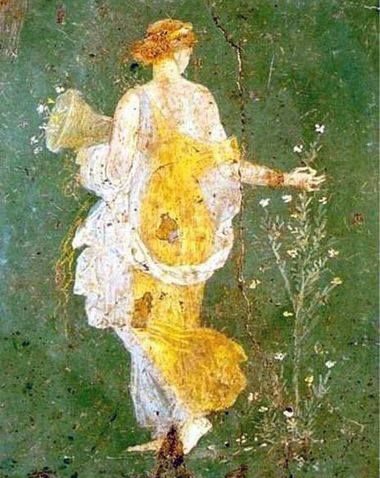
“Flora,” detail of fresco, Villa di Arianna, Stabiae. First century CE.
Some people think that butterflies are the most reliable sign of spring, on account of the extremely delicate structure of that insect; but in the very year in which I am writing this treatise it has been noticed that their supply has been three times annihilated by a return of cold weather, and that migratory birds arriving on January 27 brought a hope of spring that was soon dashed to the ground by a spell of very severe winter. The procedure is two-fold: first of all it consists in trying to obtain a general principle from celestial phenomena, and then this principle has to be investigated by special signs (Pliny the Elder, Natural History, book 18, chapter 57; Loeb transl.).
…sunt qui certissimum veris indicium arbitrentur, ob infirmitatem animalis, papiliones; sed eo ipso anno cum commentaremur haec notatum est proventum eorum ter repetito frigore extinctum, advenasque volucres a. d. vi kal. Febr. spem veris adtulisse mox saevissima hieme conflictatam. res anceps: primum omnium a caelo peti legem, deinde eam argumentis esse quaerendam. super omnia est mundi convexitatis terrarumque globi differentia, eodem sidere alio tempore aliis aperiente se gentibus, quo fit ut causa eius non isdem diebus ubique valeat. addidere difficultatem et auctores diversis in locis observando, mox etiam in isdem diversa prodendo.
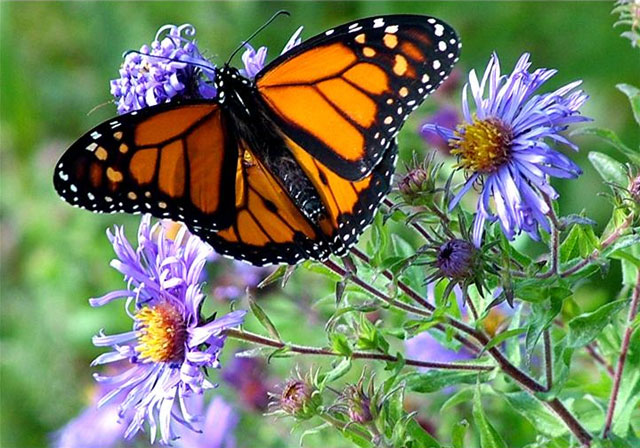
The first flower to herald the approach of spring is the white violet, which moreover in the warmer spots peeps out even in winter. Afterwards comes the violet which is called ion, and the mauve one, followed closely by the flame-colored flower called phlox, but only the wild variety. The cyclamen blossoms twice in the year, in spring and in autumn; it shuns summer and winter. A little later than those mentioned above come, overseas, the narcissus and the lily, which in Italy, as we have said, is after the rose. But in Greece comes later still the anemone. This however is a flower of the wild bulbs, and different from the plant to be spoken of among the medicinal herbs. It is followed by the oenanthe, the melanium and the wild heliochrysus, then the other kind of anemone, which is called the meadow anemone, after which comes the gladiolus, together with the hyacinth (Pliny the Elder, Natural History, book 21, chapter 38; Loeb transl.).
Florum prima ver nuntiantium viola alba—tepidioribus vero locis etiam hieme emicat—post ea quae ion appellatur et purpurea, proxime flammeum, quod phlox vocatur, silvestre dumtaxat. cyclaminum bis anno, vere et autumno. aestates hiemesque fugit. seriores supra dictis aliquanto narcissus et lilium trans maria, in Italia quidem, ut diximus, post rosam. verum in Graecia tardius etiamnum anemone. est autem haec silvestrium bulborum flos, alia quam quae dicetur in medicis. sequitur oenanthe ac melanium et ex silvestribus heliochrysos, deinde alterum genus anemones quae limonia vocatur, post hanc gladiolus comitatus.
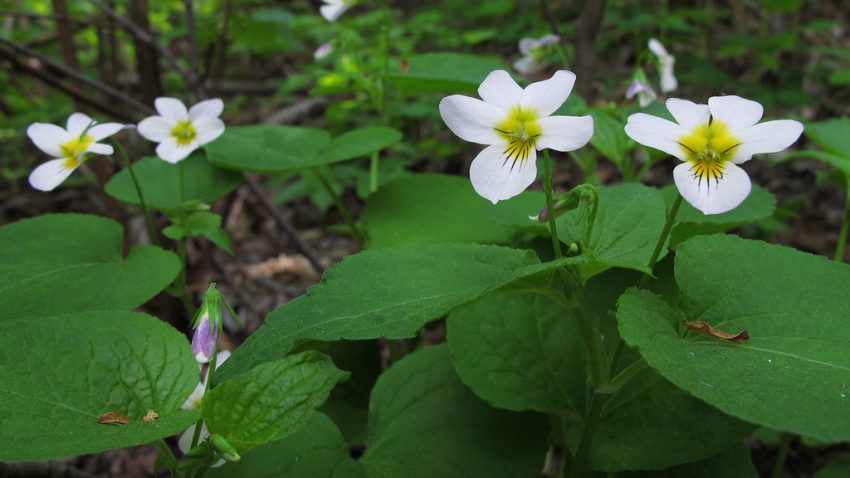
The Classics Library’s “Book of the Month” in April: Wild Flowers of Cyprus.
See the delightful Facebook post about this book by PhD candidate Angelica Wisenbarger:

…the blossom is the token of full spring and of the rebirth of the year—the blossom is the trees’ rejoicing: it is then that they show themselves new creatures and transformed from what they really are, it is then that they quite revel in rivaling each other with the varied hues of their coloring (Pliny the Elder, Natural History, book 16, chapter 40; Loeb transl.).
…flos est pleni veris indicium et anni renascentis, flos gaudium arborum: tunc se novas aliasque quam sunt ostendunt, tunc variis colorum picturis in certamen usque luxuriant.
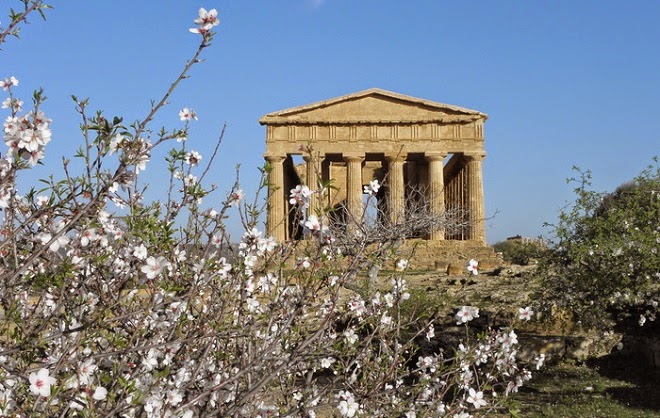
Almond trees in bloom at Agrigentum (Agrigento), Sicily.

“Spring” from The Four Seasons by Antonio Vivaldi.
https://www.youtube.com/watch?v=mFWQgxXM_b8
I Vespri Siciliani, Act 3, “Spring” by Giuseppe Verdi.
https://www.youtube.com/watch?v=RMiKEOI4Y3g

Colorful rendition of Flora, from Sandro Botticelli’s Primavera.
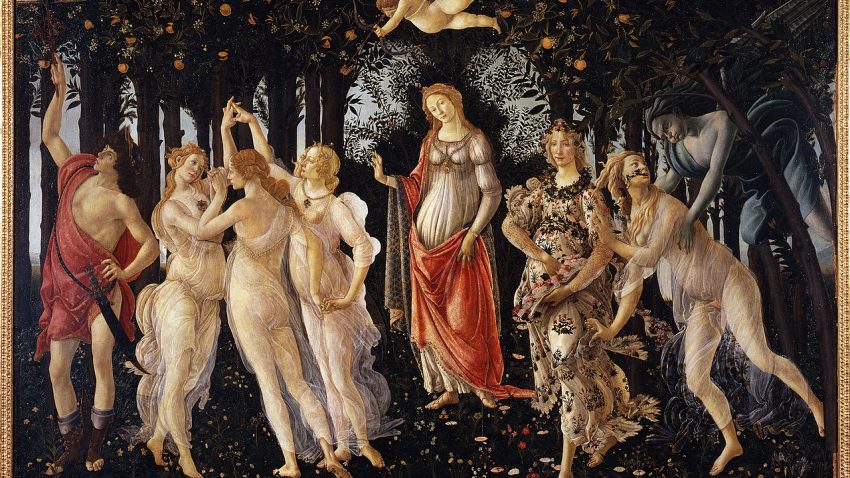
The real thing. The Uffizi Gallery, Florence, Italy.
